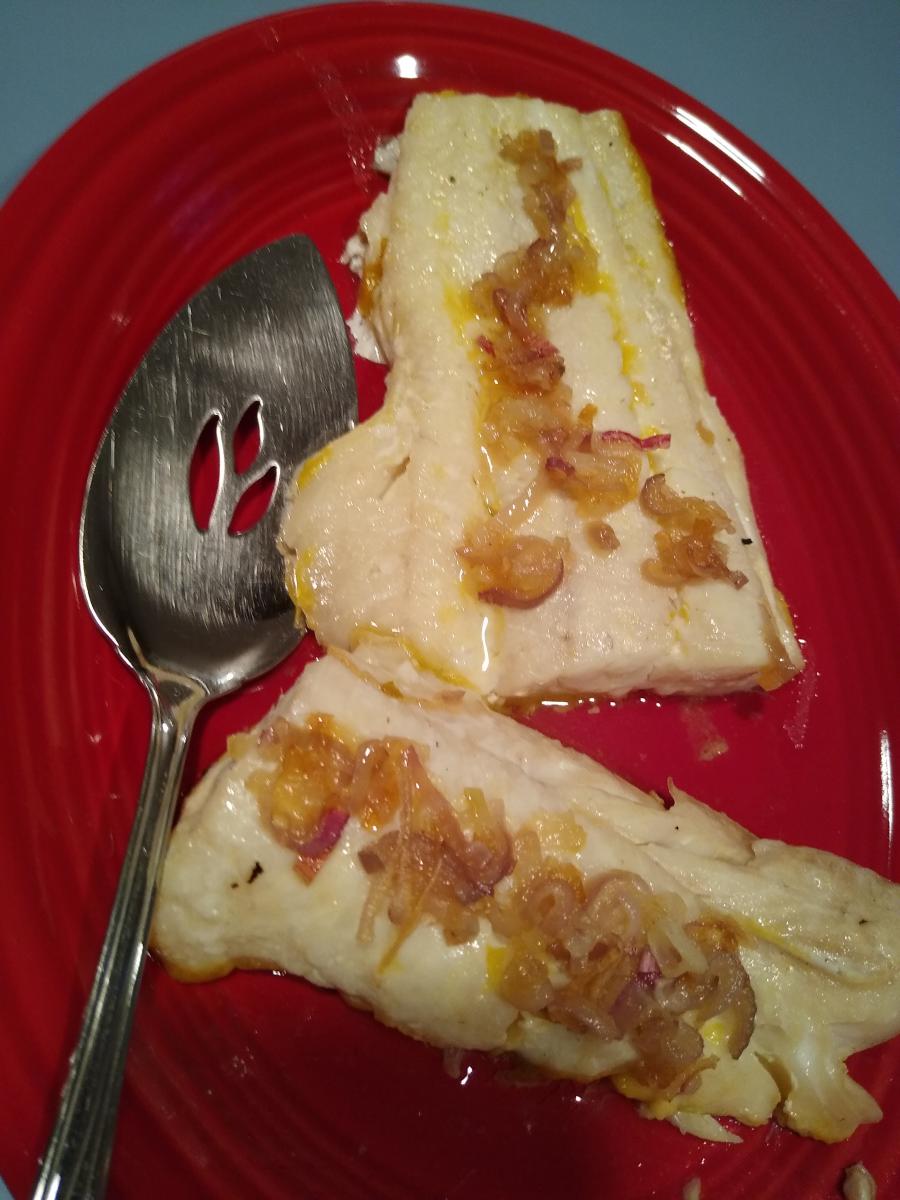 This is another simple 30-minute dinner that relies upon top-quality ingredients that are, fortunately, readily available in coastal New England for most of the year.
This is another simple 30-minute dinner that relies upon top-quality ingredients that are, fortunately, readily available in coastal New England for most of the year.
The original for this recipe calls for hake, a different flaky white fish, but haddock cooks the same way and the flavor goes very well with the shallots and lemon juice. So this is an Italian preparation made with local New England fish. It's not that hake is not local to our waters; you can sometimes find hake at bigger fish markets, but it's not nearly as popular as haddock, which you can get everywhere around here and it's every bit as good as or even better than hake in this preparation, in my opinion.

 This was yummy and simple, just pan-fried fish served with tender cooked thinly-sliced leeks. The mild flavors complemented each other nicely.
This was yummy and simple, just pan-fried fish served with tender cooked thinly-sliced leeks. The mild flavors complemented each other nicely. 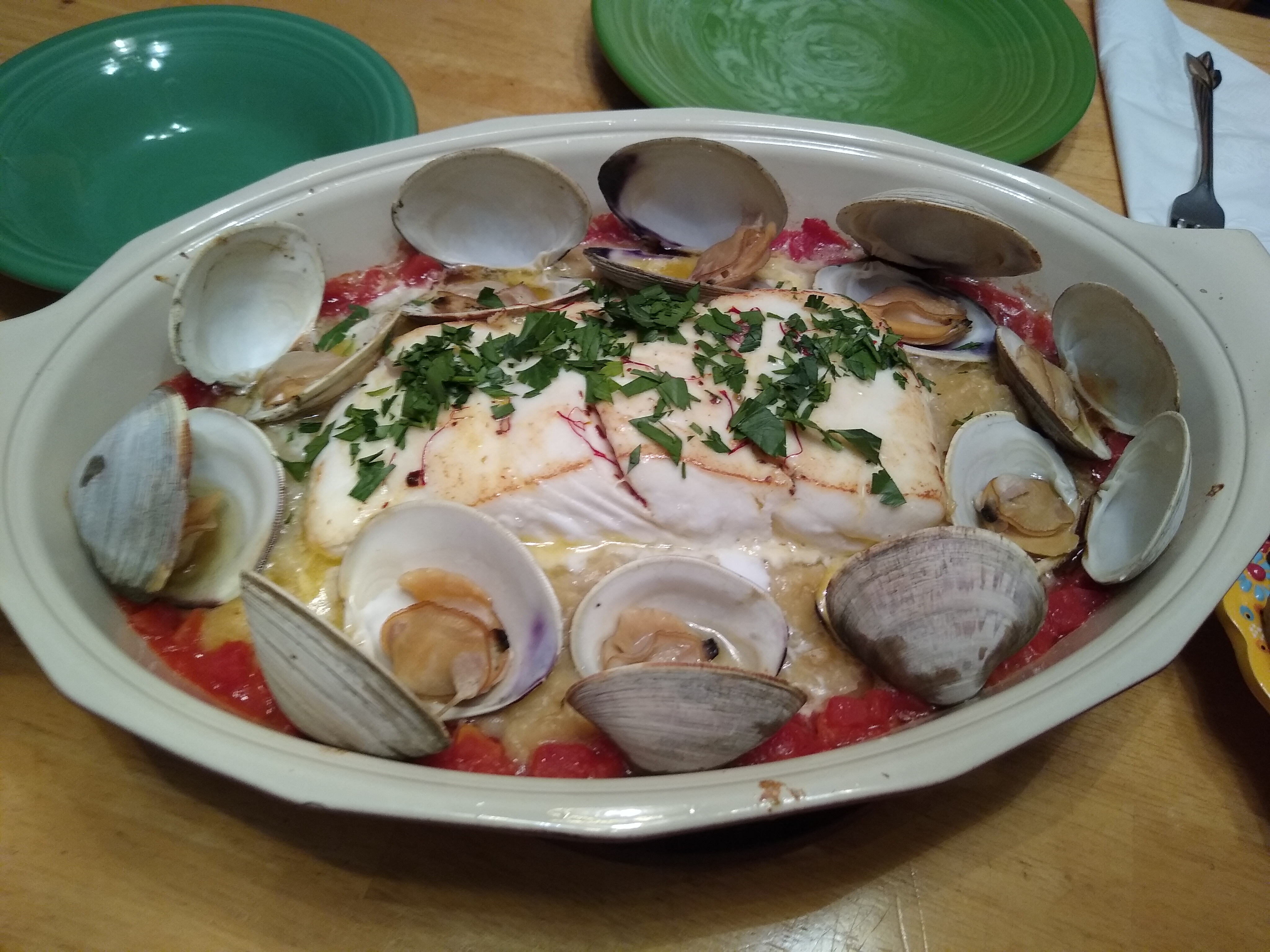 Here's a wonderful dish suitable for company and a beautiful table. The halibut sits on a bed of pureed seasoned potatoes and is surrounded by littlenecks and dressed with a savory saffron sauce. It's exquisite!
Here's a wonderful dish suitable for company and a beautiful table. The halibut sits on a bed of pureed seasoned potatoes and is surrounded by littlenecks and dressed with a savory saffron sauce. It's exquisite!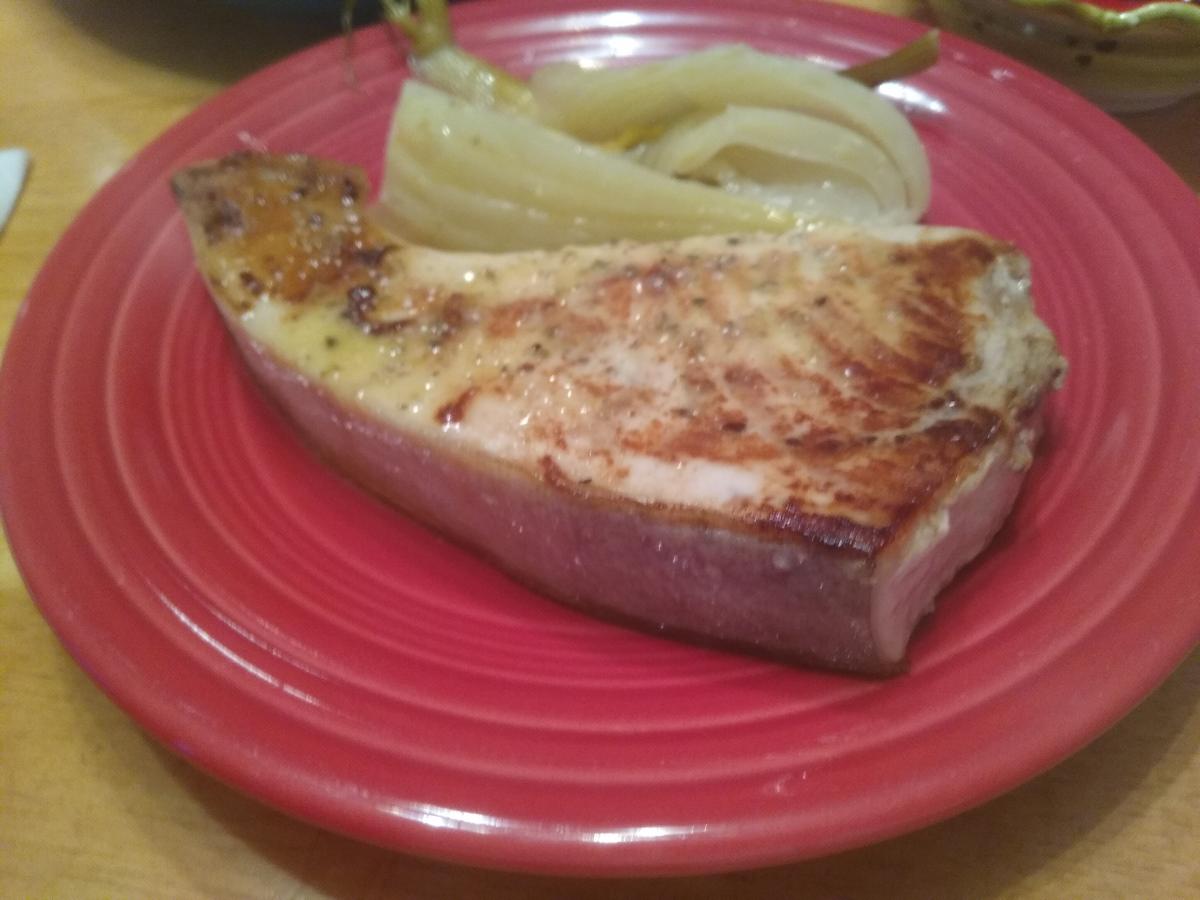 Salmoriglio is a classic Sicilian sauce for grilled fish and meats. It showcases flavors typical of Sicily and Greece (2500 years ago, Sicily was a major part of Magna Graeca).
Salmoriglio is a classic Sicilian sauce for grilled fish and meats. It showcases flavors typical of Sicily and Greece (2500 years ago, Sicily was a major part of Magna Graeca).  Messina is in northeast Sicily, at the point closest to the boot of mainland Italy; that's where the ferries come in from Reggio di Calabria.
Messina is in northeast Sicily, at the point closest to the boot of mainland Italy; that's where the ferries come in from Reggio di Calabria.
 The original Italian recipe called for John Dory or Pomfret, but we don't find that in our local fish markets so I tried it with haddock, and I recommend it.
The original Italian recipe called for John Dory or Pomfret, but we don't find that in our local fish markets so I tried it with haddock, and I recommend it. 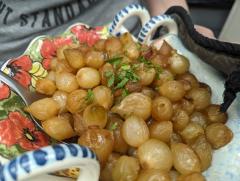 These braised onions from the northwestern foothills of the Alps are simple and delicious, especially since perfectly good pearl onions are available frozen year round.
These braised onions from the northwestern foothills of the Alps are simple and delicious, especially since perfectly good pearl onions are available frozen year round.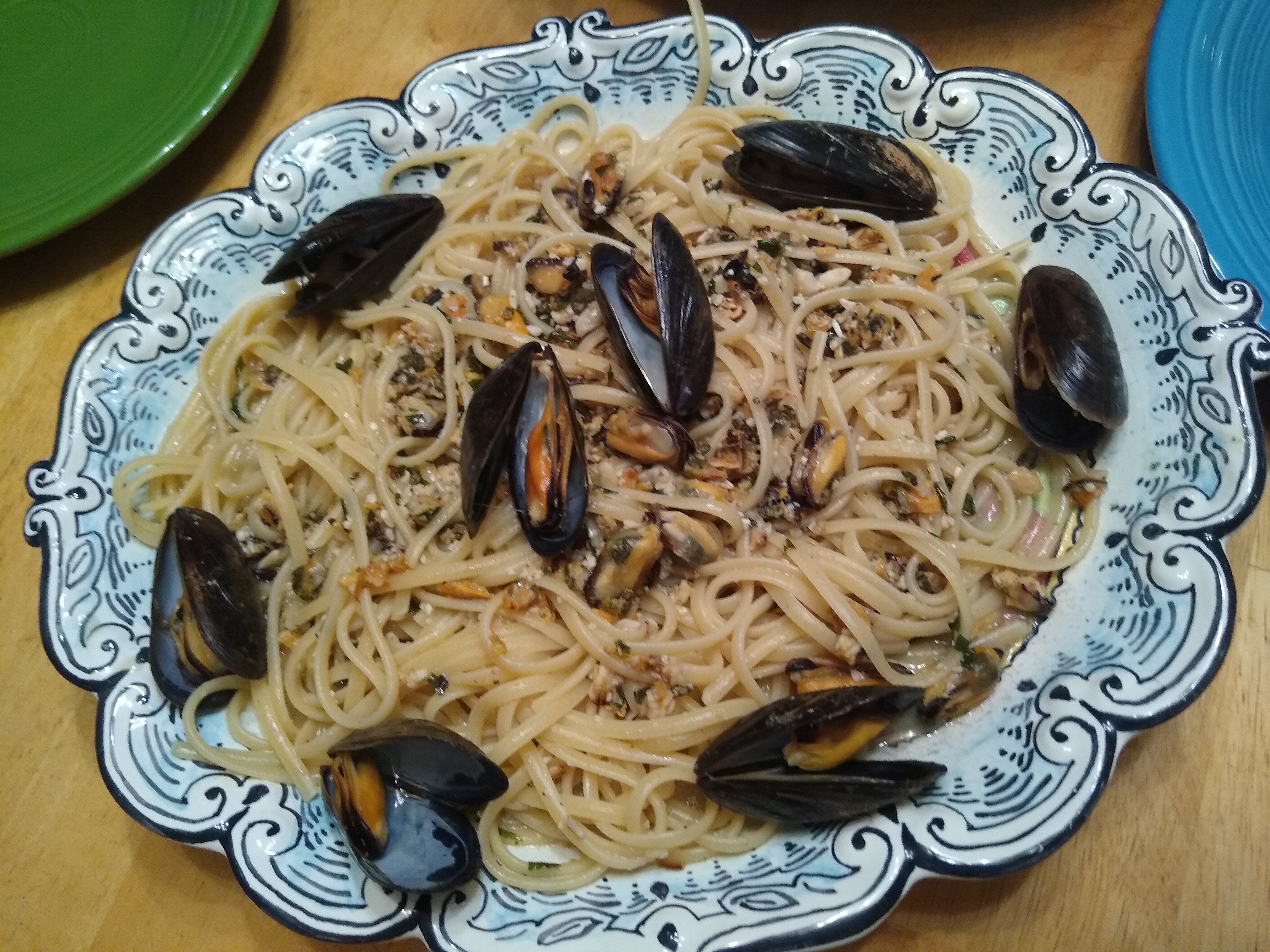 This is a logical variation on a nineteenth century recipe, recognized by Enrica at the delightful
This is a logical variation on a nineteenth century recipe, recognized by Enrica at the delightful